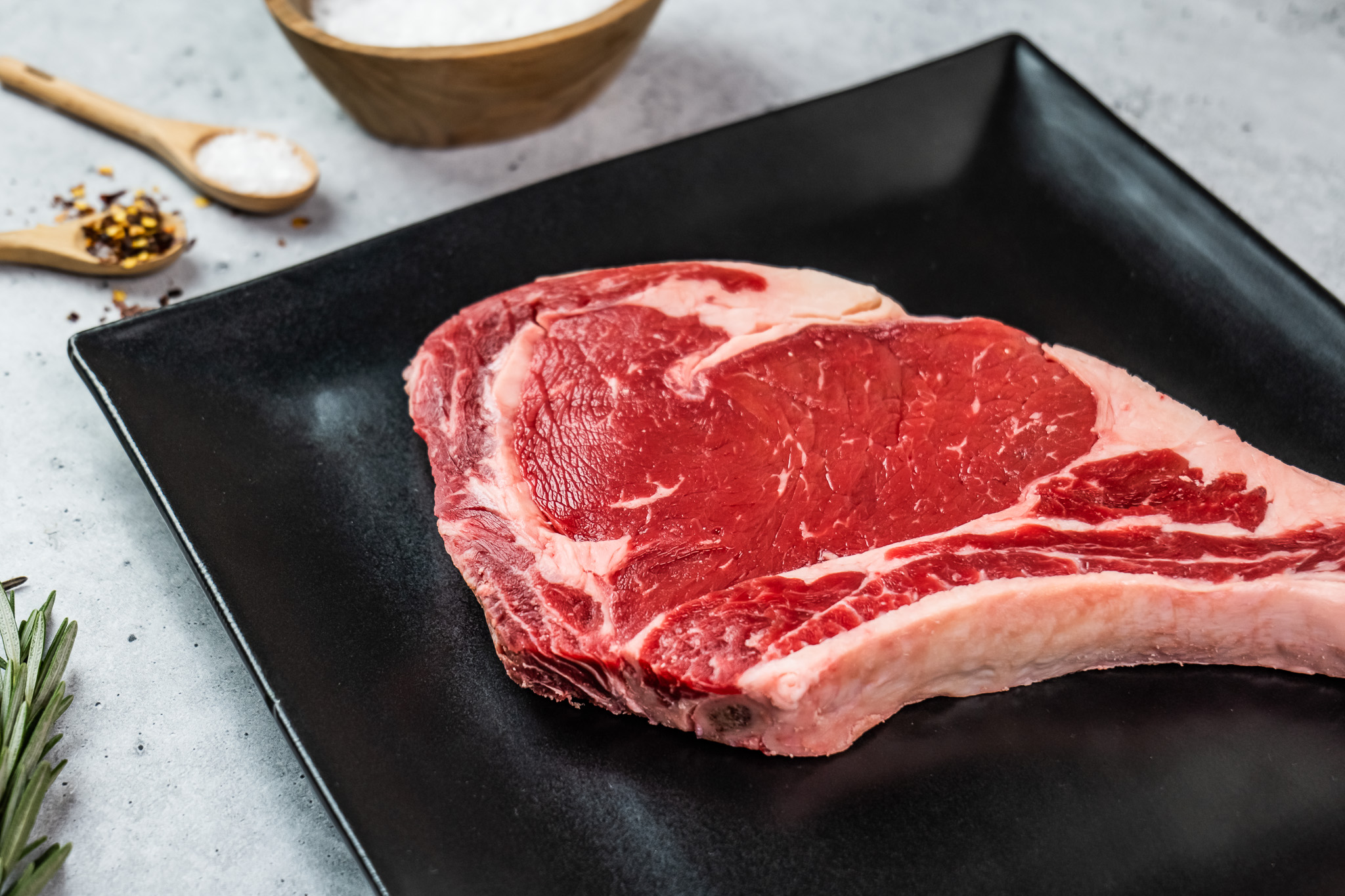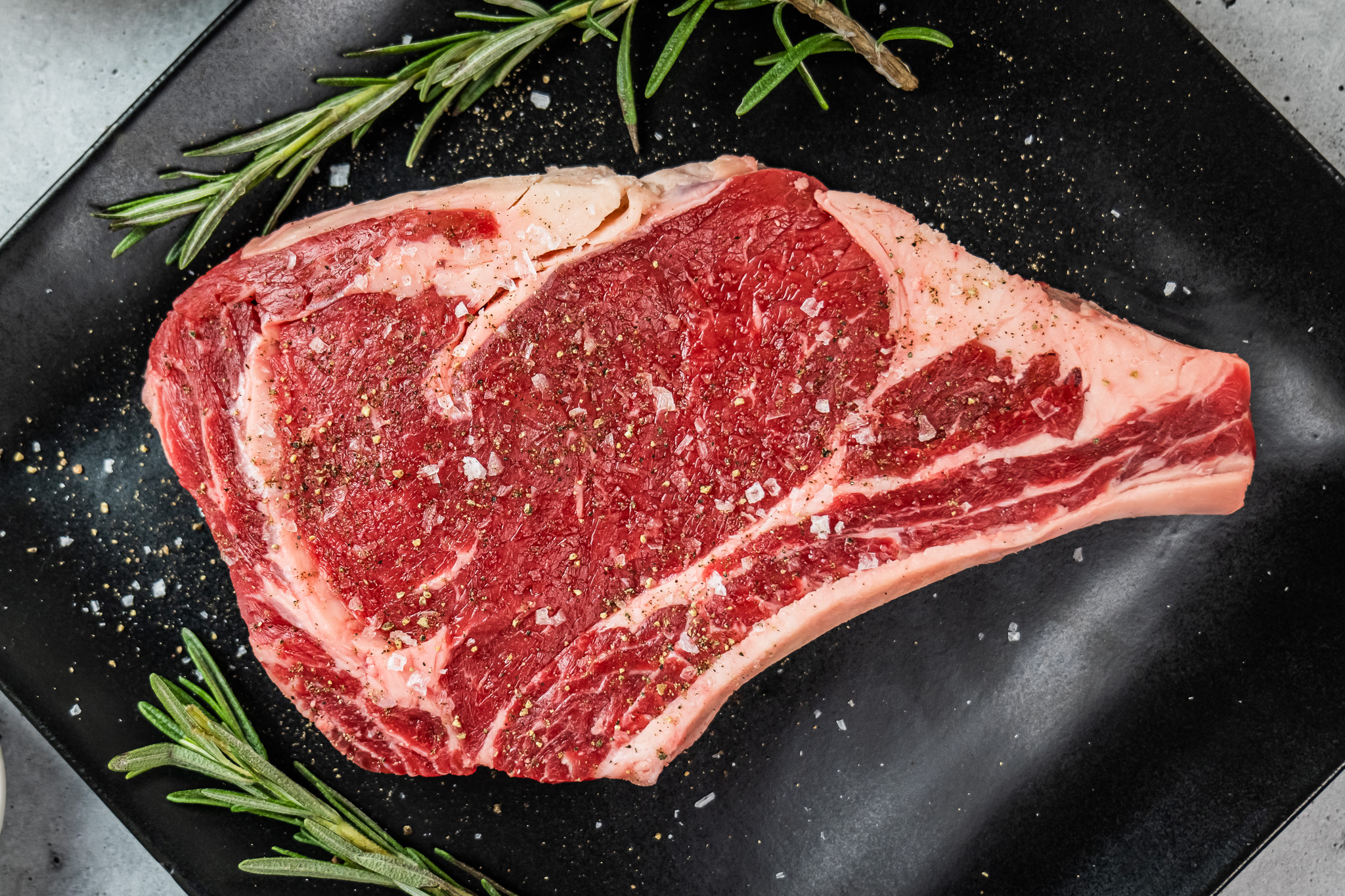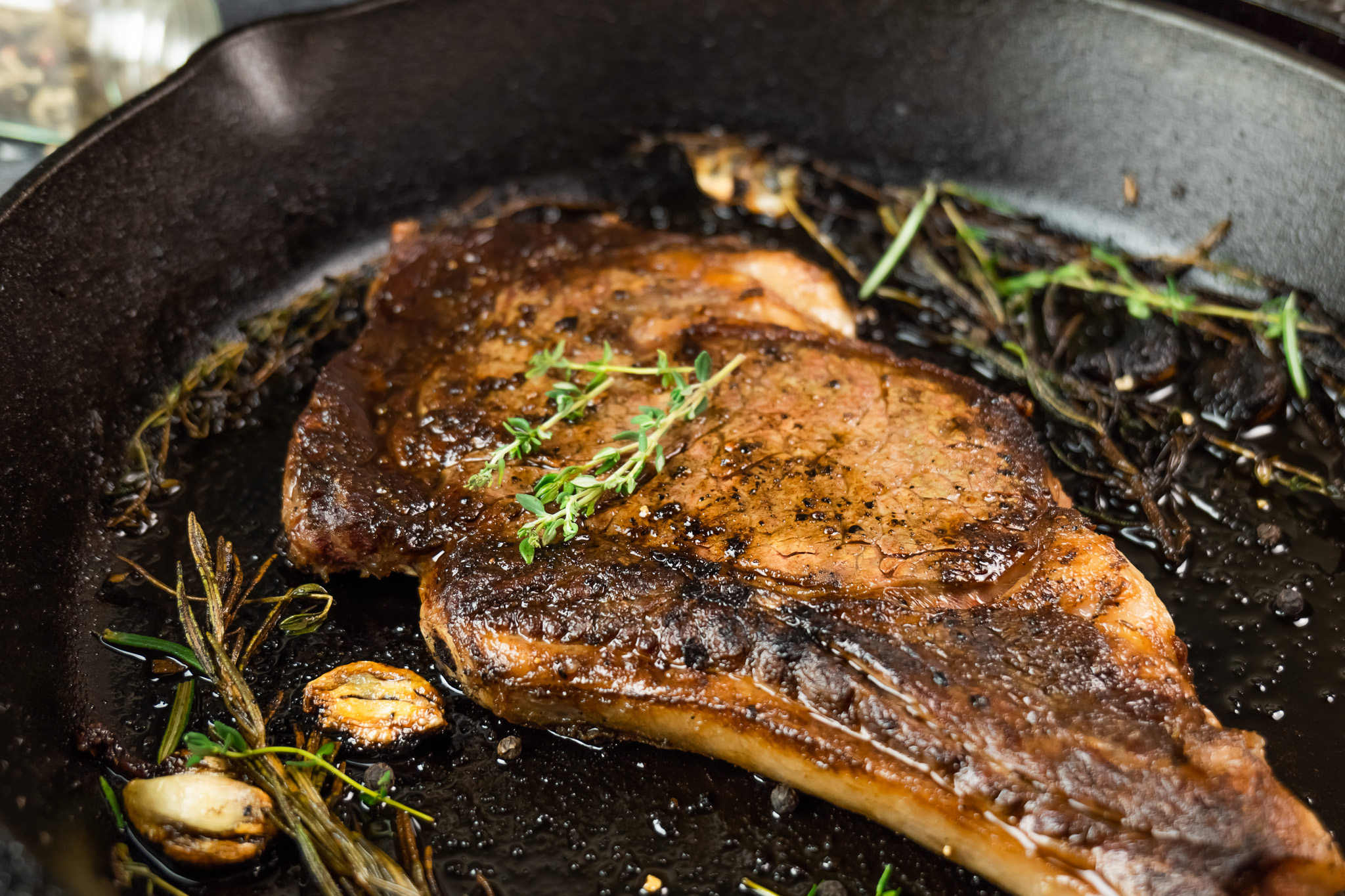Cooking the Best Steak
Cooking the perfect steak is a true art form. Some prefer a tender and juicy medium-rare, while others like their meat well-done with a crispiness to its crust. Regardless of the level of “done-ness”, there are different ways to achieve a perfect steak. We will explore different methods for preparing and cooking steak and provide tips on selecting the right cut, seasoning the beef, and reaching its perfect form.
The Right Cut
You can’t cook the perfect steak unless you’ve selected the right cut. There are several cuts of beef that lend themselves well to making a great steak. Each cut has its unique flavor and texture, often influenced by its marbling. This marbling refers to the tiny streaks of fat that run throughout the muscle, helping to keep the meat moist and flavorful.
Rib-eye: This steak is renowned for its flavor and tenderness and is often the chef’s favorite. Ribeye steak is cut from the rib section of the cow and is sometimes served bone-in for added flavor. Rib-eye is loaded with fat that runs through the meat, providing it with an unbeatable richness and depth of flavor. This marbling of creamy fat provides it with its tenderness.
Sirloin: Sirloin steaks are leaner than rib-eyes and have a slightly subtler flavor, due to having less fat marbled through the cut. There are a few different types of sirloin, most notably top and bottom sirloin. Top sirloin is more tender, while bottom sirloin can be tougher and lack the same flavor.
New York Strip: New York Strip steak is often known as top loin or Kansas City steak and comes from the short loin. It has a similar amount of marbling as rib-eye, providing it with a rich and beefy flavor but it is a little bit leaner, providing it with a firmer texture.
Filet Mignon: Filet Mignon, or tenderloin, is one of the most luxurious cuts of steak and is taken from the tenderloin of the cow, located near the spine, resulting in an extremely tender piece of meat. It is usually sold in small, cylindrical thick cuts and has a delicate, buttery flavor, and is a great choice for special occasions or high-end steak dinners.
T-Bone: A classic cut derived from the short loin section of the cow that gets its name from its T-shaped bone. T-bones are large and thick, often weighing between 16 and 24 ounces. They’ve got a good amount of marbling, giving them both a juicy and tender texture. T-bones are quite unique in that they contain both tenderloin and strip steak, meaning you have two distinct types of meat in the cut. The tenderloin is on the smaller side of the T while the strip steak can be found on the larger side.
Flank: This long and flat cut comes from the lower belly of the cow, which being a highly exercised area is usually less tender than other cuts, giving it the potential to be on the chewy side. This chewiness can be avoided by not overcooking the cut, or marinating it overnight, which will tenderize it while adding additional flavor.
Hanger: Sometimes referred to as the butcher’s steak, a hanger is a long, lean, flavorful, and tender cut, usually sliced extra thin against the grain to maximize its tenderness. Hanger comes from the diaphragm of the cow, which being a heavily used muscle provides the steak with a distinctive taste. Despite being quite lean, it still has a decent amount of marbling throughout, keeping it juicy. However, like flank, overcooking it can very quickly render it overly chewy.
Buying the Right Steak
Buying a steak can be quite intimidating. Cooking a tender piece of meat requires vigilance and steak aren’t known for being cheap.
When it comes to picking the steak, you’re going to want to get the best possible cut for your money. You’ll also want to consider what meal you intend to cook. If you’re looking to "wow" someone, you might want to splurge on a filet mignon, but if you’re just looking to make fun fajitas for the family and you’re all “chickened out”, a typically cheaper cut like flank could be a great option.
The color can be a great indicator of its quality. Bright, cherry red steaks have a color that suggests they have been properly aged, while those that are brown or grey should be avoided as they are likely past their prime.
If you’ve got a good local butcher, they should be able to make good recommendations and point you in the right direction with the right cut for the right meal.
Preparing the Steak
Once you’ve made your decision and bought the cut of beef you want, you’re going to want to take it home and prepare it. Whether you’re doing a little bit of grilling, or something more robust like our Low Carb Beef Lo Mein, it’s best to ensure the steak is at room temperature before you begin cooking it. Getting the steak up to room temperature prevents it from drying out and gives you more control while cooking. All you have to do is take the steak out of the fridge and the packet before placing it on the counter for half an hour before cooking.
Most steaks can be seasoned with salt and black pepper to bring out the natural flavors of the meat. Whether you choose to add other seasoning depends on the meal you have in mind. European-style steak dinners might call for fresh garlic, thyme, or rosemary to enhance the existing flavor of the meat, while Mexican dishes may do better with coriander, paprika, cumin, or cayenne. American grilling methods might involve barbecue rubs like Mesquite, while Asian dishes might involve marinating your meat in soy sauce, white wine, and chillis.
For extra flavor and to make the meat more moist, you can pat it with butter. This helps create a crust on the steak while keeping the inside of it juicy.
Levels of Doneness
Steak comes in a few different levels of doneness. The exact cooking time will depend on how thick the steak is, how hot your cooking surface is, and the method used. Here are the most common levels and how to achieve them.
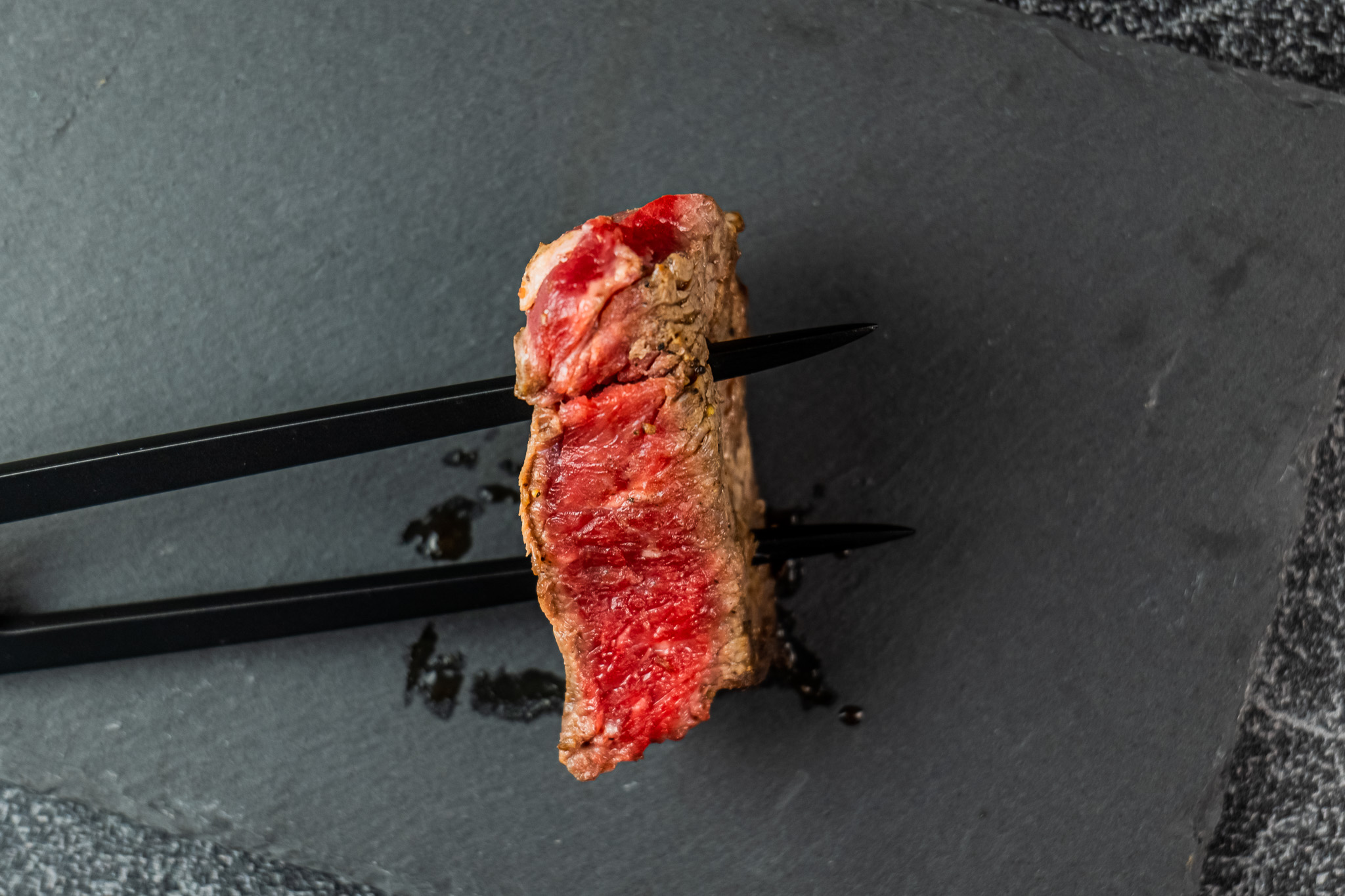
Rare: Barely cooked at all, the rare steak is typically only seared on the outside, but the cool center, with its red juices still flowing is virtually raw. To get it right, throw it on a hot cast iron skillet for around three minutes per side over high heat until it reaches an internal temperature of a little bit over 125°F.
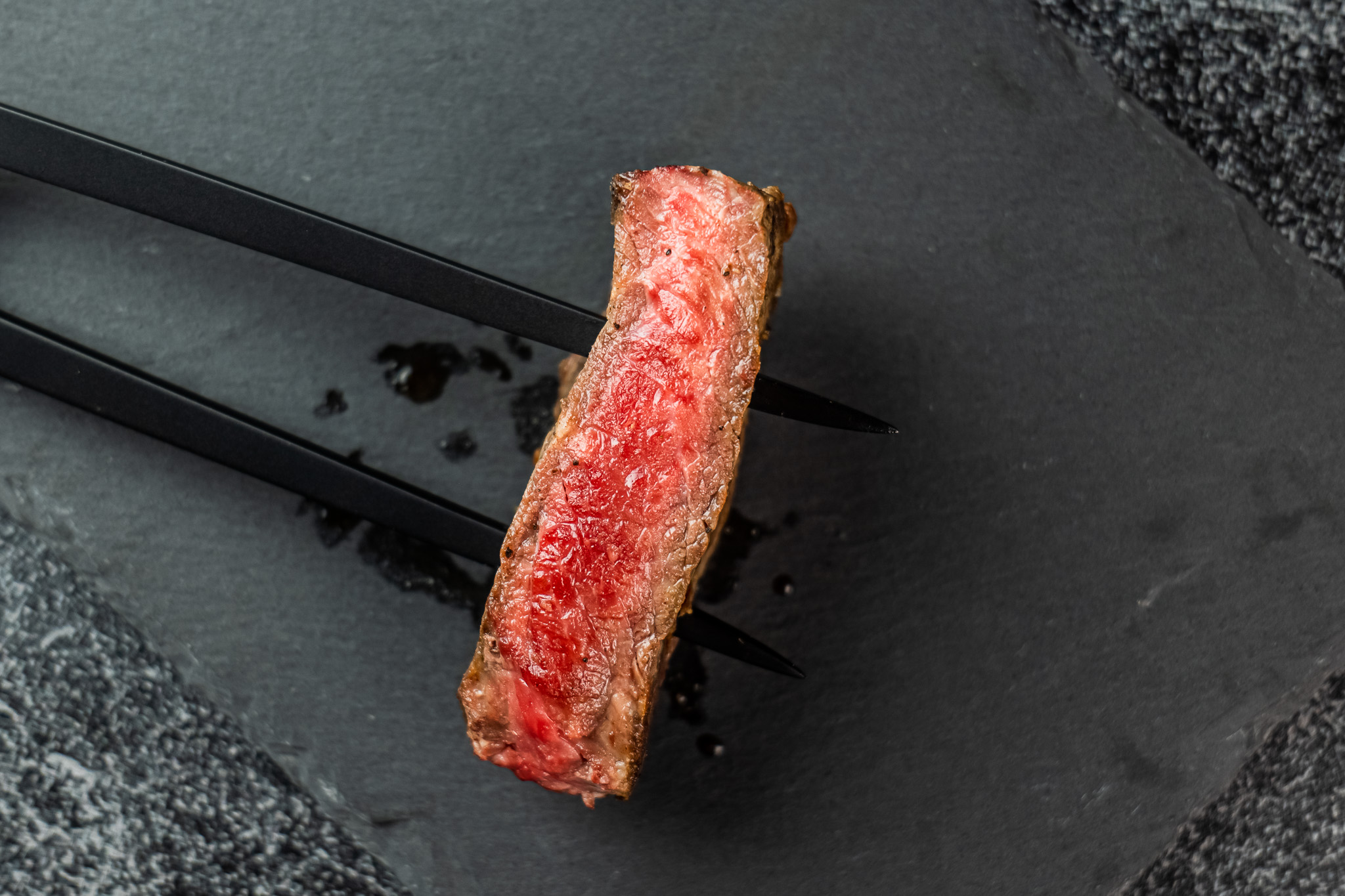
Medium-Rare: A go-to level of doneness that provides a juicy, reddish-pink center but with a beautifully seared outer layer. To cook a mouth-watering medium-rare steak, sear it in your skillet for about four minutes per side until the internal temperature gets to around 130°F or 140°F.
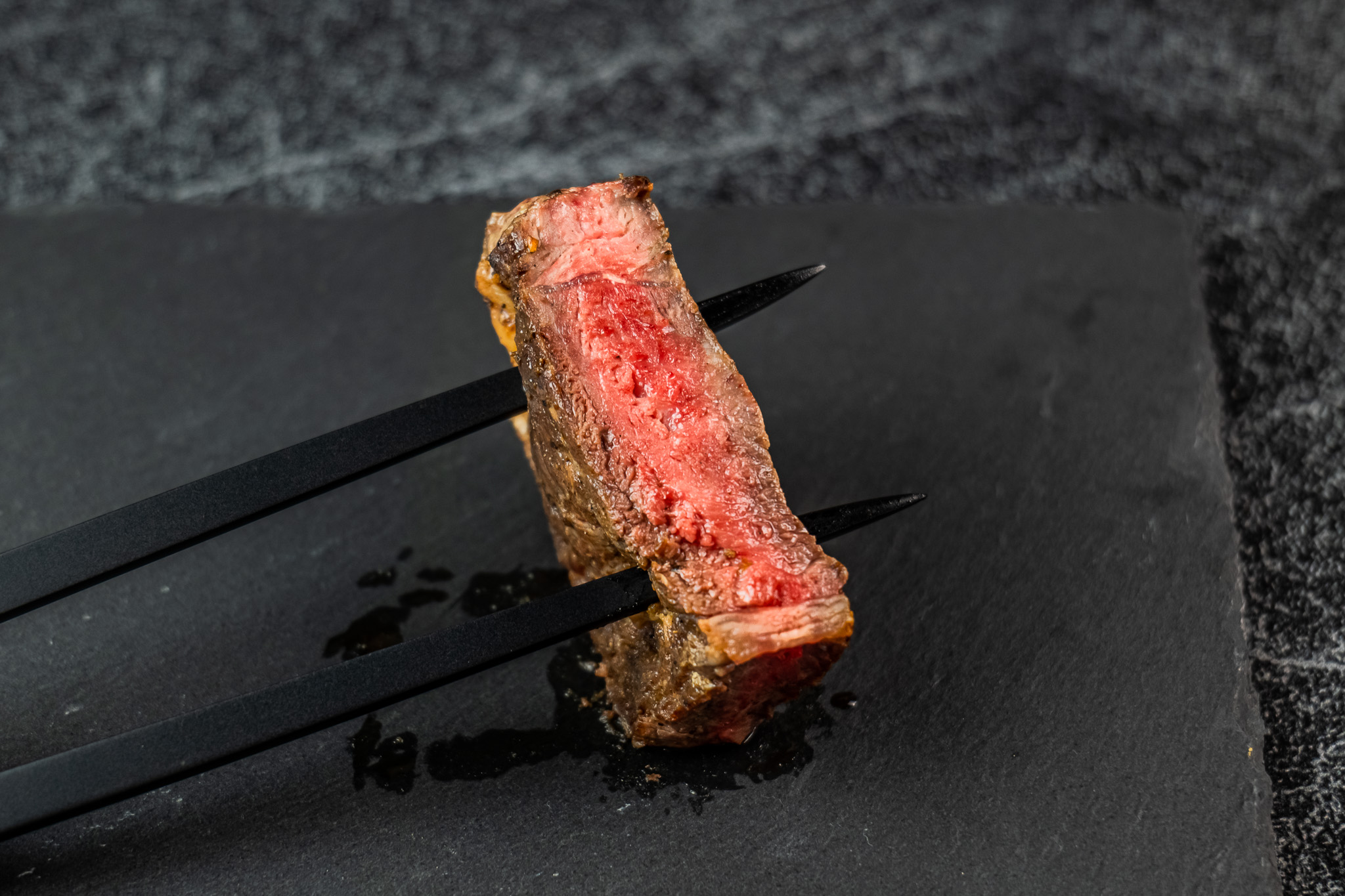
Medium: A good middle ground for meat eaters that don’t want to see too many red juices flowing from their steak, but who don’t want it overdone. There’s just a hint of pink in the center of medium steaks and it can be a good introduction for those just getting into red meat. This time, a boneless one-inch cut of meat will take around five minutes per side until its internal temperature peaks at 140°F.
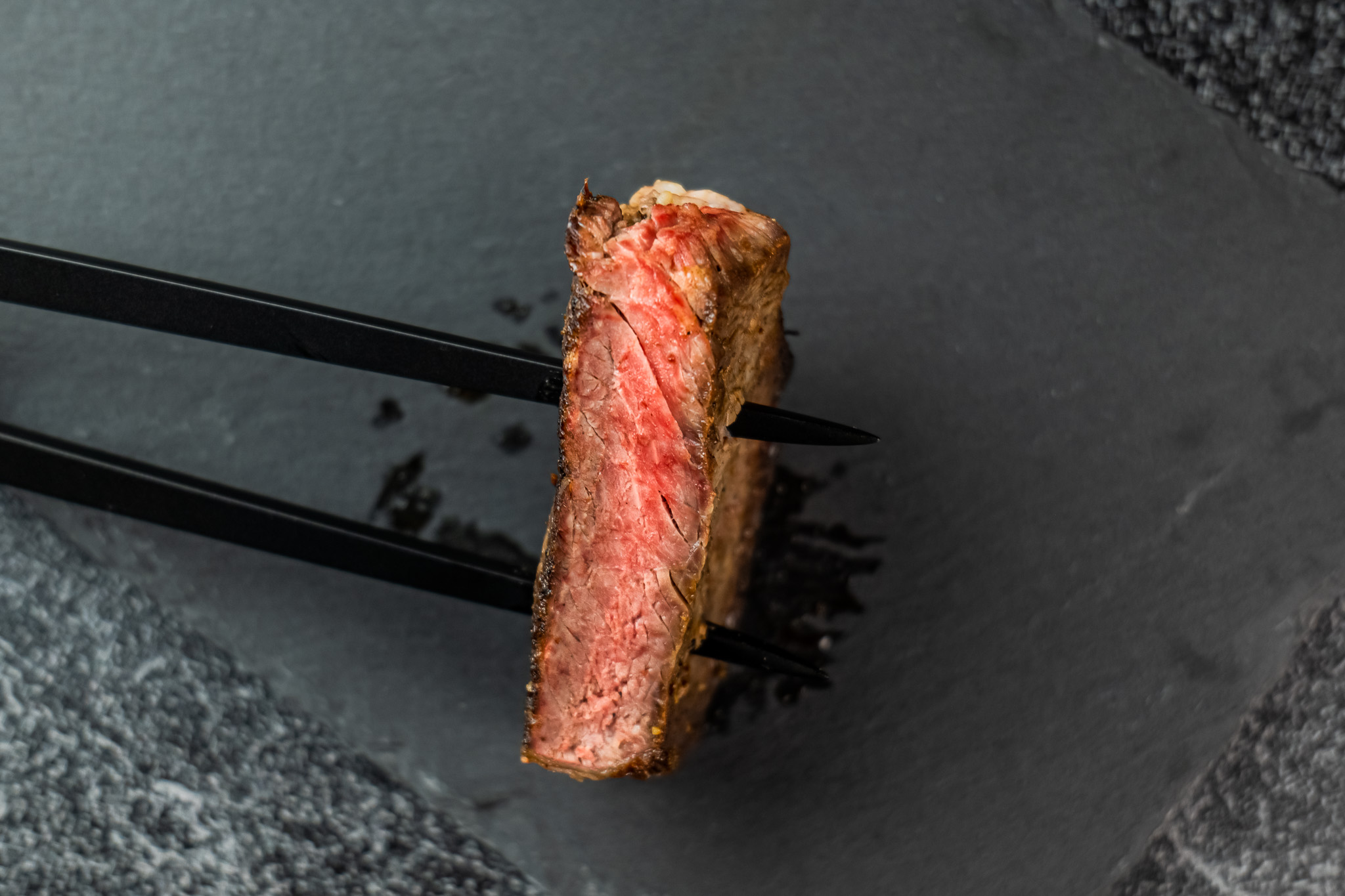
Medium-Well: If you want almost no pink and a bit more sear, medium-well steaks may be the ones for you. Medium-well steak has a greyish-brown center with barely a whisper of pink. This time, the steak will need about six minutes on either side and the internal temperature will get to around 150°F.
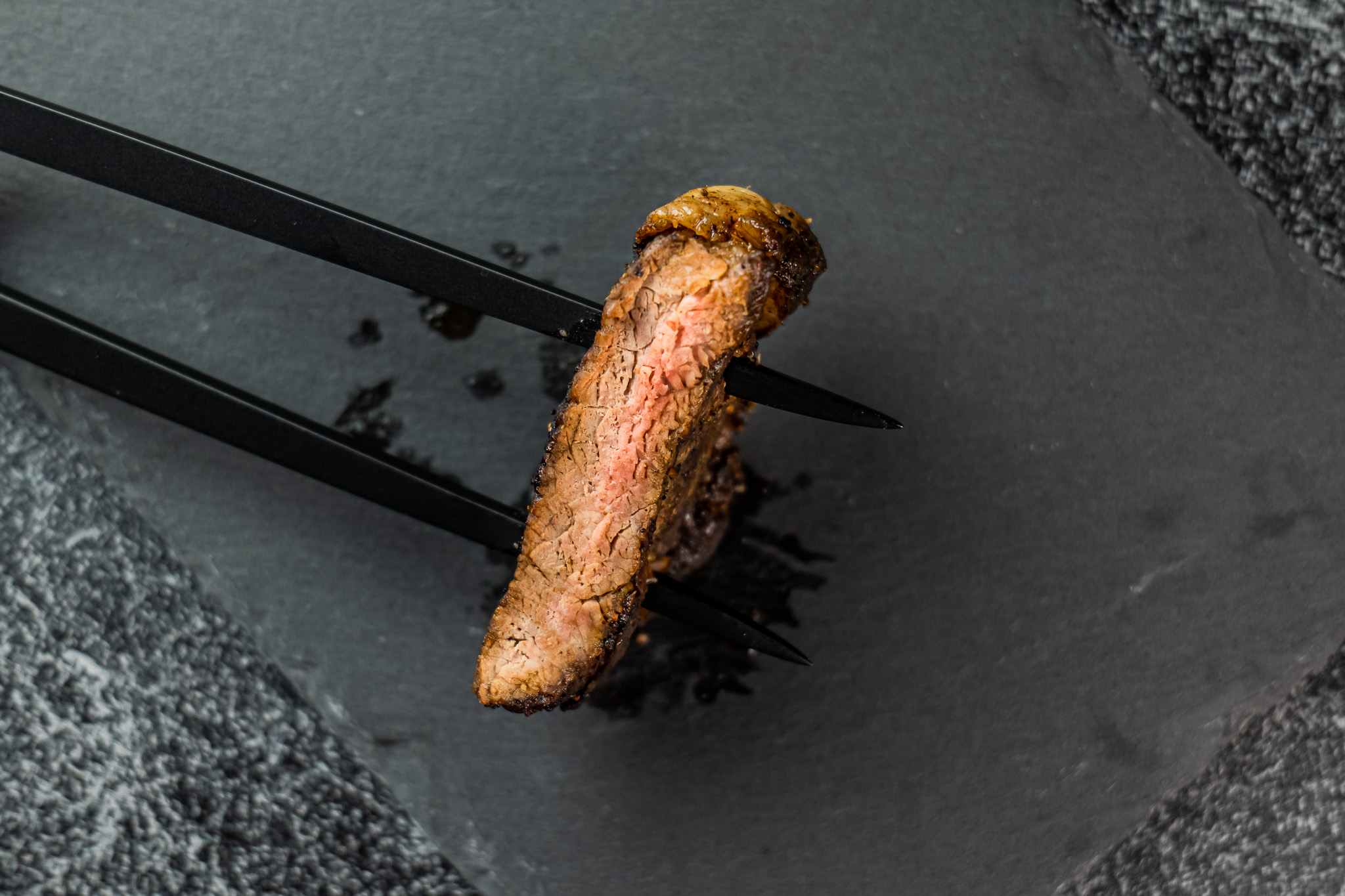
Well-Done: If you’re in a fancy restaurant and you ask for your steak well-done, you may risk inciting the rage of the chef! A well-done steak has a light greyish-brown on the outside and is cooked for six to six-and-a-half minutes per side until the thermometer gets to at least 160°F. There is a real risk of drying the meat if it's overcooked and this method may cause you to lose a lot of the natural flavor which oozes from a well-seared, well-cut bit of beef.
If you don’t have a thermometer, you can use your hand to test the firmness of your meat to find out just how done it is.
Using your non-dominant hand, press on the steak with your thumb and index finger. If the steak feels firm and has a bit of resistance, it is medium-rare. If the steak feels soft and squishy it is rare, and if it feels quite firm it is well done
Different Methods of Cooking Steak
There are a bunch of different methods for cooking steak, including grilling, pan-frying, broiling, and baking. Each of these methods comes with its advantages and disadvantages, which may depend on the cut, the equipment you have, the time available, or the meal you intend to cook the steak for. It's important to choose the right way of cooking based on your desired level of doneness, along with the cut.
Grilling: One of the most popular methods for cooking steak, grilling imparts a smoky flavor and can be a great way to cook during the summer. You’ll want to preheat your grill to high heat before you place your steak on the grill to cook. Around 4-5 minutes per side will give you a nice medium-rare steak, but it’s worth using a meat thermometer to check the internal temperature of the steak. The thermometer should read around 130°F (54°C). Once cooked to the desired level, remove the meat from the grill and allow it to rest before serving.
Frying: Another super popular steak-cooking method, frying works best when you use a pre-heated cast-iron skillet on a stovetop over medium heat. You can add butter or oil to the pan as it heats up. Canola or vegetable oil are good choices due to their neutral flavor.
Like grilling, 3-4 minutes on either side should sear in a nice medium-rare doneness. Be sure to press down slightly to ensure this sear. Again, an internal temperature of 130°F should suggest that the steak is cooked to medium-rare, while those who like their steak a little more cooked will get a medium at 140°F. Resting the steak after the fry on a plate will allow the meaty juices to redistribute through the cut to make it more tender and juicy.
Baking: Baking is also fairly popular, as it can be quite low maintenance, but this hands-off approach arguably offers less control than the other methods. To bake your steak, set your oven temperature to 425°F and line a baking sheet with aluminum foil with a wire rack on top. Put the steak on the rack and bake for around 15-20 minutes until you’re happy with its level of doneness. Again rest the steak afterward.
Some people like to sear their steak in a pan first before transferring it to the oven. To do this, heat a cast-iron skillet over high heat on the stove. When the skillet is hot, pat your steak with butter and some minced garlic. Put the steak in the skillet for just over two minutes per side, until you see a crust forming on the outside. Put the skillet in the oven and cook it for another six or so minutes, until the internal temperature gets to around 130°F (you may be seeing a trend here!). Take the skillet from the oven and as before, let it rest before you get slicing.
Sous vide: A bit more on the fancy side of things, sous vide is a method that has been on the rise in recent years. You’ll need a sous vide machine and a vacuum sealer to cook a steak sous vide style. Season your steak and seal it in a vacuum-sealed bag. With the bag sealed, place it in a sous vide water bath and cook it until you reach your desired level of doneness. To get a medium rare steak, it’ll take around 1-2 hours. Once you’ve cooked your steak, remove it from the bag and pat it dry with paper towels. You don’t want a soggy steak after all!
To get a really nice crust on the outside sear this cooked steak with some butter.
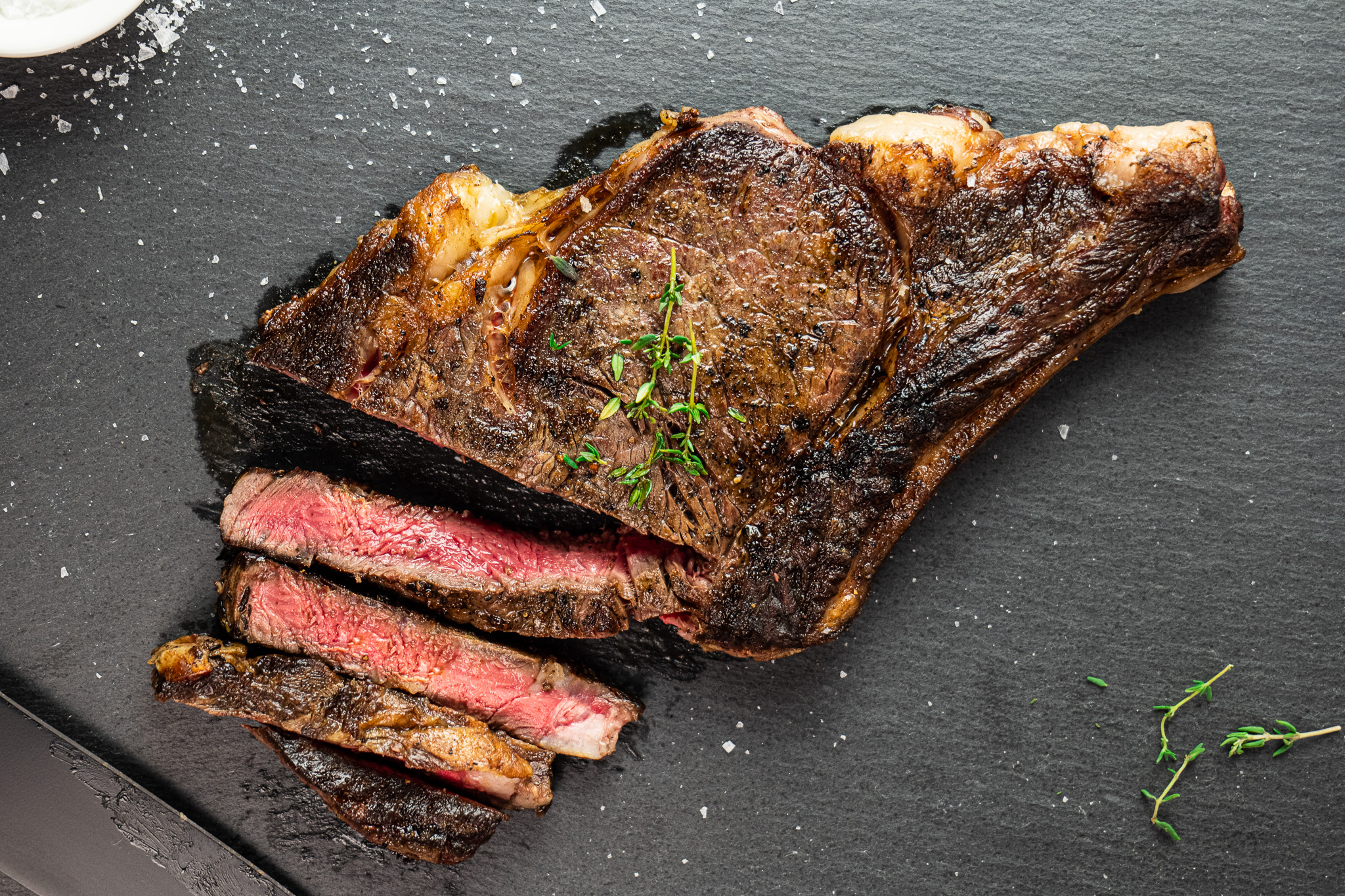
Here's a simple recipe for a delicious medium-rare steak using a cast-iron skillet:
Ingredients:
- 1 steak (ribeye, sirloin, or New York strip)
- Salt and black pepper
- 1-2 cloves garlic, crushed
- 1-2 sprigs fresh thyme or rosemary
- 1-2 tablespoons butter
Instructions:
- Bring your steak to room temperature by taking it out of the fridge and letting it sit for 30 minutes to an hour.
- Season both sides of your steak generously with salt and black pepper.
- Heat a cast-iron skillet over high heat on the stove.
- Add a pat of butter, crushed garlic, and fresh herbs to the skillet.
- Add your steak to the skillet and cook for 2-3 minutes per side, until a crust forms on the outside.
- Transfer the skillet to the oven and bake at 425°F for 5-7 minutes, or until the internal temperature reaches around 130°F for a medium-rare steak.
- Remove the skillet from the oven and let the steak rest for 5-10 minutes before slicing into it.
In conclusion, cooking the perfect steak requires a bit of knowledge and practice, but with the right techniques and tools, anyone can become a master of steak-fu. If you have the time, patience, budget, and a good butcher, you can be adventurous with your choice of methods, cuts of meat, and the recipes involved. Ready to dive into the world of steak? Try this our delicious Ranch Steak with Jalapeno Cashew Pesto
